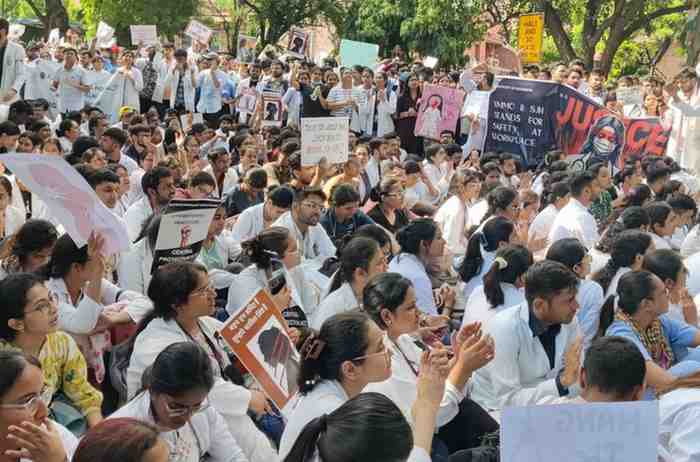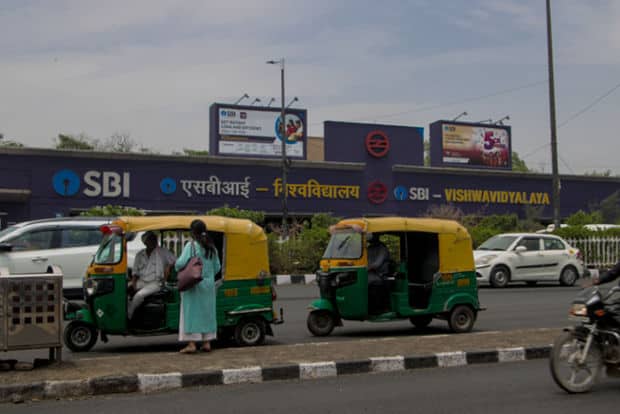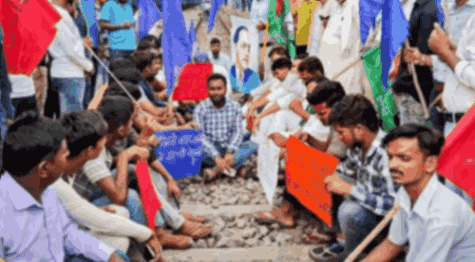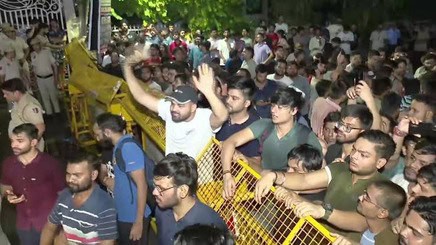The crowded lanes near NG Acharya and DK Marathe College in Mumbai saw a flashback of the memories of 2023. Students took to protests after the college released a notice prohibiting women from wearing burqa/niqab/hijab and ‘revealing’ dresses to maintain uniformity and give them ‘a taste of corporate life’. As the institutional regulation of women’s clothes continues, can we ever be free?
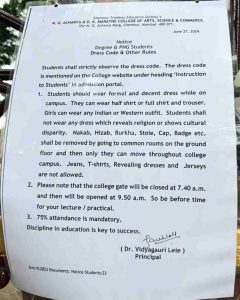
NG Acharya and DK Marathe College, Mumbai banned the students from wearing a hijab or revealing clothes, through a circular released on June 27, 2024. The proposed action by the college administration included prohibiting students from wearing burqas, niqabs, hijab, badges, caps and stoles that could reveal their religious identity. The decision was justified by the authorities on the grounds of abolishing all sorts of discrimination and ensuring uniformity and discipline among them. The step was taken to imbibe professionalism in the students, also forbidding them from wearing ‘revealing and indecent clothes.’ Nine students were particularly dismayed, they challenged the decision and filed a petition which led the Supreme Court to stay the order.
Dress codes in educational institutions have always been a source of conflict. Imposing restrictions and setting a code of conduct regarding dresses to be worn have challenged the basic right of students to wear an attire of their choice. A dialogue with the students of Kamala Nehru College gave a clear image of the importance of this freedom.
It’s liberating for the students, particularly for women, as they can wear what they are comfortable in and create an environment that fosters a broad thinking of the worldview,
mentioned a student.
Another student considered it a privilege to be a part of DU, saying,
I have the liberty to choose clothes according to my body shape and size without being conscious about it. School uniforms were usually uncomfortable.
In conversation with DU Beat, Adv. Nivedita Pandit suggested,
Hijab ban is not the solution. Rather, at the college level, it should be a choice and not a compulsion. To deal with the issue of non-college students entering the college, it must have proper security checks and student IDs. Moreover in today’s high-tech time, one should incorporate a thumbprint scanner, still, if someone is found without an ID on college premises, then strict action should be taken against them.
There has been a constant assumption by authorities and administrations that making women wear non-revealing clothes can ensure safety and security while on their own or traveling. While they claim to empower women, these restrictions actually stand as an obstacle in their lives. In the past, women’s actions have been dictated by men, considered to be the breadwinners of their families. They made decisions for the women, thus restricting their agency over their own lives. This is the reality of many women even today, and these institutional authorities are equally guilty in perpetuating the same.
DU professors shared their opinions on the steps taken by the college. In conversation with DU Beat, a journalism professor from Kamala Nehru College completely disagreed with the decision and mentioned,
These are contradictory statements given by the college where students are prohibited from wearing revealing clothes and at the same time covering their head. Their definition of ‘decent dressing’ isn’t correct.
Another professor commented,
Students must enjoy the freedom they get in college after high school and all kinds of restrictions they go through in school life. Self-discipline must be imparted in students instead of dictating rules for them.
Minisha Afroz, a student of Kamala Nehru College expressed her disappointment by saying,
I am proud to be a part of this unbiased institution where we practice inclusivity and I get to wear a hijab without thinking twice. We take pride in each other’s culture and don’t have norms to hold us back. Providing education to students irrespective of what they wear and their religious identities should be the top priority of a college.
In 2023, a similar incident had occurred in several medical colleges in Telangana and Andhra Pradesh, particularly Gandhi Medical College, Andhra Medical College, and Osmania Medical College. Students were made to follow strict dress codes including prohibition of tights and sleeveless dresses for women. Meanwhile, male students were asked to wear formal clothing and black leather shoes.
In medical institutions, students are required to follow the norm to uphold the professionalism demanded by their field. But arbitrary dress-codes challenge women’s decision-making power over the kind of clothes they wear. The authorities have always been a legislative body for school and college-going women. If not the authorities, the school/college administration takes up the role.
It’s hard to believe that it has been decades and not a single place has witnessed all the women being confident about what they wear, without being conscious of their skirts or backless tops. Every year, while the country celebrates independence, women are yet to find their freedom.
Read also: Sexism in Kirori Mal College B.Sc Courses
Featured Image Credits: Hindustan Times
Taruni Banerjee




